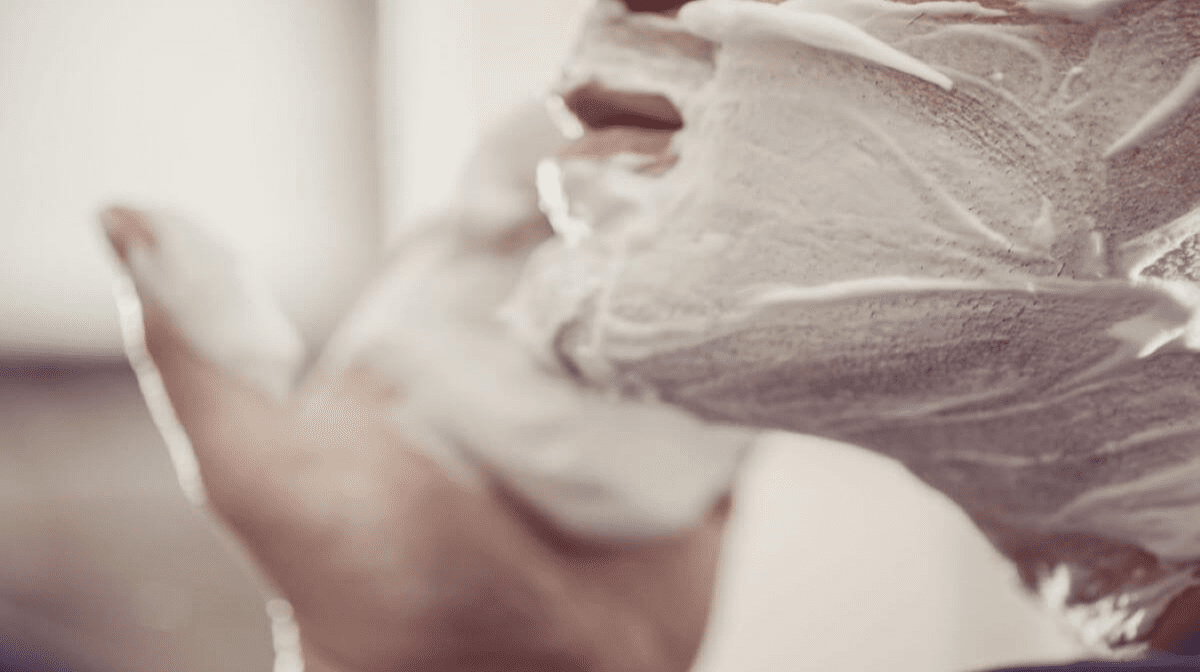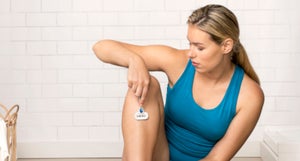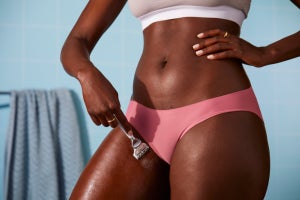
Not sure about wet vs dry shaving? Delve into the variances and advantages of methods to determine the most suitable shaving technique for your needs.
6 min read
Share with the Community:

It’s time to explore the differences between the two shaving styles and their pros and cons so you can decide which shaving technique suits you best!
In This Article
- What is wet shaving?
- Tips for wet shaving
- Tips for wet shaving – legs
- Tips for wet shaving – underarms and bikini line
- Pros and cons of wet shaving
- What is dry shaving?
- Tips for dry shaving
- Pros & cons of dry shaving
- Wet shaving vs dry shaving – which is best?
What is wet shaving?
Wet shaving is a popular and effective method of shaving that involves using water, shaving cream or soap, and a razor.
You need three things for a wet shave: water, shaving cream and a razor. Wet shaving is the most common way to shave for women, as it delivers a close, comfortable shave and many women find it easiest to wet shave in the bath or shower.
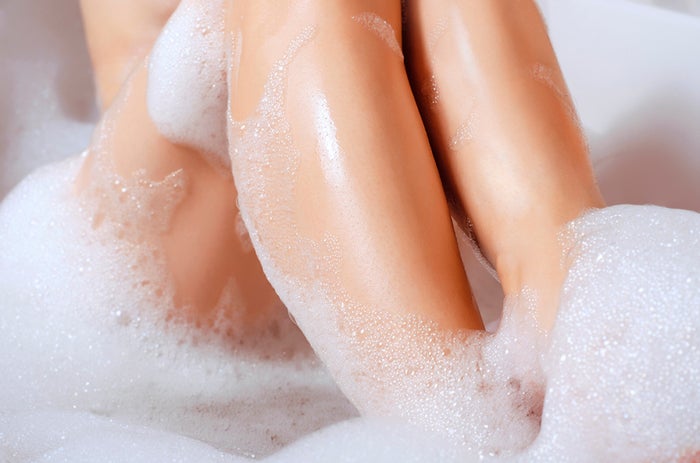
Tips for wet shaving
To achieve long-lasting smoothness, follow these top tips for wet shaving.
1. Prep your skin
Before you begin wet shaving, take the time to prep your skin. You should have a warm shower or bath to cleanse the skin and soften the hair. You can also exfoliate to remove any dead skin for an even closer shave.
2. Use a sharp, clean razor blade
A good shave requires a good razor such as Venus Deluxe Smooth Sensitive Razor. Make sure your razor blade is clean and sharp – otherwise, it can tug and pull and hinder the shaving process. Disposable razors and razor heads should generally be replaced every five to ten shaves.
3. Apply shaving cream
Shaving cream is essential for a smooth, comfortable shave. Apply your shaving cream or gel of choice to wet skin and massage it into a thick lather before you pick up a razor.
4. Shave with the grain, not against it
Always shave with the grain – in the direction of hair growth – and not against it when wet shaving. Shaving against the grain increases the chance of razor burn, razor bumps and skin irritation.
5. Don’t press too hard
Be gentle when wet shaving. Don’t be tempted to press too hard with the razor blade – this can irritate your skin and even result in cuts.
Tips for wet shaving – legs
Wet shaving your legs? Follow our top tips on how to shave your legs for a silky-smooth finish.
1. Shave legs after taking a warm shower
The best time to shave your legs is after a hot shower. Water hydrates the hair and skin, helping you get a closer shave.
2. Use shaving cream
Shaving cream makes it much smoother when shaving hair on the legs. Lather it up for a layer of protection as your shave.
3. Shave in the direction of hair growth
It’s best to shave downwards toward hair growth when shaving your legs. Shaving against the grain increases the risk of skin irritation. If you choose to shave up your legs, make sure you use plenty of shaving cream and press lightly.
4. Go for long & even strokes
When shaving your legs, use long and even strokes to reduce friction against the skin.
5. Shave carefully over tricky areas like ankles and knees
As every regular leg shaver knows, the ankles and knees are the trickiest spots to shave. Take extra care when shaving these areas to avoid nicks and cuts.
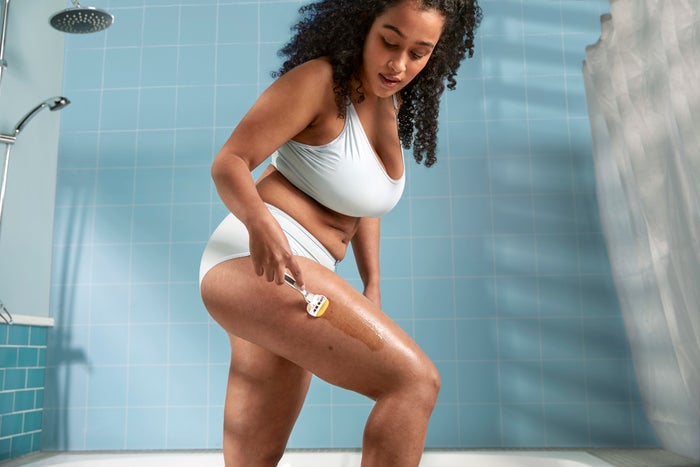
Tips for wet shaving – underarms and bikini line
Here are our top tips for wet shaving your underarms and bikini line.
1. Shave with the grain
To avoid red bumps and ingrown hairs, shave with the grain (in the direction of hair growth) on your underarms and bikini line.
2. Shave over an area just once
The underarms and bikini line are particularly sensitive areas when shaving, so shave over each area just once. Going over the same area multiple times is a recipe for razor burn.
3. Don't shave with dry skin
Dry shaving is a no-go for the bikini and underarm areas. Always wet shave your bikini line and underarms; you can thank us later.
4. Pull your skin taut
Pull your skin taut when shaving your underarms and bikini line. This allows the razor to glide effortlessly over the skin without catching

Pros and cons of wet shaving
Wet shaving brings with it a set of pros and cons – let’s take a closer look.
Pros of wet shaving
- Closer shave for long-lasting results
Wet shaving allows you to achieve an ultra-close shave, so you’ll be stubble-free for longer.
- Exfoliation
When you wet shave, it effectively exfoliates the skin – the top layer of dead skin is removed by the razor to expose new skin underneath. This means you may not need to exfoliate again.
- Smooth glide
One of the main pros of wet shaving is the smooth glide of the razor. Water and shaving cream act as a lubricant between the skin and the razor blades for a comfortable, easy shave.
- Less irritation
There’s less chance of skin irritation with wet shaving than with dry shaving. The water and shaving cream act as a buffer between your skin and the razor, so there’s less friction – and as a result, less razor burn and post-shave red bumps.
Cons of wet shaving
- Nicks & cuts
While wet shaving gives a closer shave, it also has a higher risk of nicks and cuts. If you use plenty of shaving cream and slow, steady strokes, you’ll significantly reduce the chance of cutting your skin with the razor.
- Longer shaving time
Wet shaving is a longer process than dry shaving. Wetting the skin, applying shaving cream and rinsing the skin afterwards take time.
- Can be inconvenient at times
Wet shaving can be inconvenient at times. You need a water source, and sometimes it might be inconvenient to wet your skin.
- Ingrown hairs
Ingrown hairs are more likely with wet shaving as it cuts hairs below the skin surface. Whilst this provides an ultra-close shave, it can cause ingrown hairs. Exfoliation is key to reducing the chance of ingrown hairs.
What is dry shaving?
As the name suggests, dry shaving doesn’t require water or lubrication. Both the razor and skin are completely dry for a quick, hassle-free shave.
Dry shaving is a good option when you’re pressed for time or don’t need an ultra-close shave.

Tips for dry shaving
Shaving sans water? Here are our top tips for a successful dry shave.
1. Gently and slowly shave with the hair’s grain
Take care when dry shaving. Shave with the grain – in the direction of hair growth – to reduce possible irritation. Make sure you use slow strokes of the razor with gentle pressure.
2. Keep your razor clean
When dry shaving, it’s essential to ensure the razor blades are free of hair and skin debris. If possible, clean the razor between strokes to ensure it doesn’t get clogged.
3. Use a moisturising exfoliator before shaving
To prevent ingrown hairs, a moisturising exfoliator can help by lifting away dead skin. This can also help you achieve a closer shave.
4. Wash your skin to soften the hair
You should always wash your skin before shaving to remove any pore-clogging oil and dirt. Wash with lukewarm water to hydrate the hair the hair before reaching for the razor. Cleansing also softens the hair and makes it easier to shave.
5. Don’t dry shave if you have sensitive skin
If you have a skin condition (such as eczema or psoriasis) or have sensitive skin, dry shaving is not recommended. You should also avoid dry shaving skin that is inflamed or irritated.
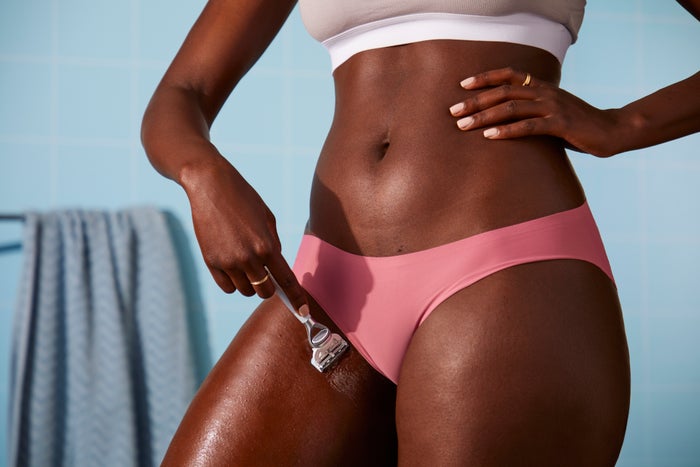
Pros & cons of dry shaving
What are the pros and cons of dry shaving? Let’s take a look.
Pros of dry shaving
- Convenience and speed
The main pro of dry shaving is its convenience and speed. Unlike wet shaving, where you must first cleanse the skin and apply shaving cream, you can begin dry shaving by just picking up a razor. This makes it ideal if you don’t have much time to shave.
- Less irritation
Dry shaves are not as close to the skin as wet shaves. As a result, there’s less chance of skin irritation, which can make it a more popular option for those with sensitive skin.
- Reduction in ingrown hair
Another benefit of dry shaving is less ingrown hair. Wet shaving cuts hair close to – and even below – the skin surface, which makes ingrown hair more likely.
- Less razor burn
Razor burn is less common with dry shaving compared to wet shaving. Dry shaving doesn’t provide as close a shave as wet shaving (which can be a con if you’re after ultra-smooth skin), but this also means there’s less friction against your skin – and fewer razor burns as a result.
- No water or shaving cream required
If you don’t have water or shaving cream to hand, fear not – dry shaving doesn’t require any. For example, this makes it a great option if you’re shaving at a festival.
Cons of dry shaving
- Not so close shave
The main con of dry shaving is that it gives a less-close shave than wet shaving. Wet shaving cuts hair below skin level, whereas dry shaving cuts hair at or above the skin surface.
- Maintenance
Due to the less-close shave, more maintenance is required to upkeep stubble-free skin with dry shaving. Wet shaving provides longer-lasting results.
- Dry, flaky skin
Dry shaving can result in dry, flaky skin. The lack of moisture, coupled with the drag of a razor over the skin, can cause dryness that wet shaving doesn’t. However, by moisturising regularly, you can keep flaky skin at bay.
- Uneven results
Uneven or patchy results are more likely with dry shaving than wet shaving. Take care to shave with slow, gentle strokes to get consistent results across the whole area.

Wet shaving vs dry shaving – which is best?
So, is it better to shave wet or dry? This ultimately depends on a few things – such as how close a shave you want, the time you have and your skin sensitivity.
Wet shaving is a more popular option as it gives a closer shave and longer-lasting smoothness. It is a lengthier process than dry shaving, but many women shave in the shower or bath (when the skin is wet anyway).
Wet shaving is the best option if you have sensitive skin. Water and shaving cream lubricates the skin to provide protection against the razor blade – something that dry shaving doesn’t give.
If you don’t have much time for shaving, a dry shave is a great quick fix. No water or shaving cream is required, so you can dry shave anywhere. However, you should still take steps to prevent skin irritation.
Wet & dry shaving FAQs
Is it ok to wet shave every day?
Yes, there’s no problem with wet shaving every day. Ensure you use a sharp razor and plenty of shaving cream to protect the skin.
Does dry shaving make hair thicker?
No, dry shaving does not make hair grow back thicker or faster. The same applies to wet shaving.
Does dry shaving cause acne?
Dry shaving won’t cause acne if you take a few simple steps. You should cleanse the skin before and after shaving to remove dirt, oil and dead skin, and only shave with a sharp and clean razor.
Is it better to shave your legs wet or dry?
It’s generally better to shave your legs wet rather than dry. Wet shaving provides a closer shave for longer-lasting results – plus, it’s easier to cleanse the skin of oil and dead skin to prevent blocked pores or infection.
Complete Your Shaving Routine


